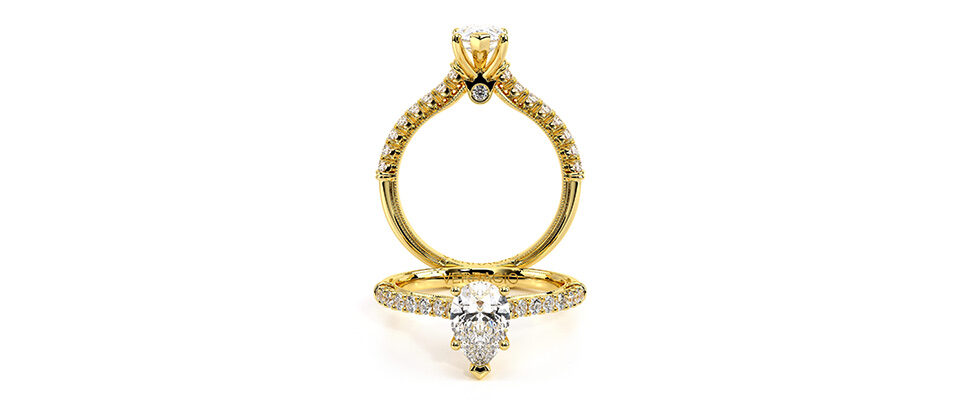Diamonds are formed under pressure underneath the Earth. If you’re not sure what the difference between color and clarity is or what the 4 Cs of diamond buying are, keep reading to learn more with our diamond clarity grade guide.
- What Is the Diamond Clarity Scale? — According to the Gemological Institute of America Inc., which came up with the GIA Clarity Scale, diamond clarity refers to the absence of blemishes and inclusion. The scale helped standardize a grading system to make it easier for shoppers to understand the quality of diamond they were buying. Even then, no diamond is perfect or 100 percent flawless. A Flawless diamond on the GIA Clarity is extremely rare and just as extremely expensive. Most jewelers have never seen a true Flawless diamond. Most quality yet realistically affordable diamonds will fall above VS2 and IF, meaning Very Slightly Included and Internally Flawless.

Source: Syda Productions/Shutterstock.com
- Tips for Buying Diamonds Based on Clarity — According to the American Gem Society, there are five different factors to consider when buying diamonds based on clarity. You’ll want to consider size, nature, number, location and relief. For size, if there are any large inclusions on the diamond, that can lower the clarity grade and impact the durability of the stone. Nature refers to the type of inclusion, whether it’s relatively superficial or if it’s deep in the diamond. The number of inclusions is judged as well as how readily visible they are on the diamond. As for location, the closer to the center of the table, the greater impact on the clarity grade. Finally, the relief refers to how distinct the inclusion is compared to the host diamond.
Shop Luxury Diamond Engagement Rings
- What Is Color? — Determining the diamond’s color grade should only be done by certified grading professionals. Keep in mind that the tone of a ring’s setting can also affect the appearance of the diamond’s actual color. Evaluating the diamond based on color is based on the absence of color. Interestingly enough, diamonds are found in nature in almost every color in the rainbow.
- What Is Cut? — There are plenty of different diamond shapes, from the princess cut diamond ring to the oval shaped diamond. A diamond that’s too deep or too shallow will allow light to escape from the bottom or side of the stone. A well-cut diamond will produce that shiny effect with more light through the crown. The color of a diamond can range from an icy colorless white to a light yellow. The light yellow is the least rare kind of diamond and much less expensive than the rare and most expensive colorless white diamond.
Purchase a Princess Cut Diamond Ring
- What Is Carat? — Carat comes down to the weight of the diamond. Most people will want the largest diamond they can afford for their diamond engagement rings. Keep in mind that all the other Cs of the 4 Cs are just as important, so don’t settle for a larger diamond ring if the clarity, cut and color aren’t also well-considered. When picking diamond rings for women, ask for advice from a Verragio fine jewelry expert.

- What Is Clarity? — Now that you know about the other Cs of the 4 Cs, let’s talk about what you came here for: clarity. Clarity refers to how rare the diamond is, helping consumers understand how one diamond can be worth more than another. The Gemological Institute of America Inc.’s clarity scale ranges from included to flawless.
Here’s the bottom line: You’ll want a diamond that looks clean and clear to the naked eye. Most people aren’t going to be snooping on your diamond engagement ring with a magnifying glass. When inspecting diamond rings, look at it away from any harsh lighting. When in doubt, speak with any of our Verragio diamond experts to gain clarity on what kind of clarity is best for your engagement ring.
Find Premium Diamond Rings for Women
